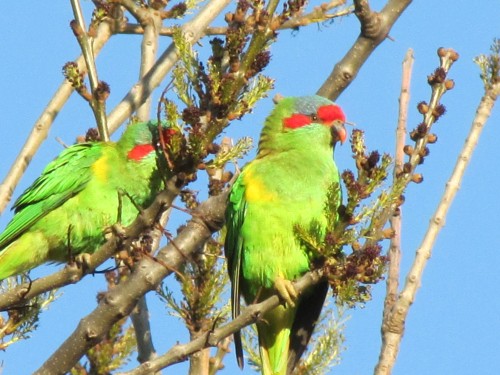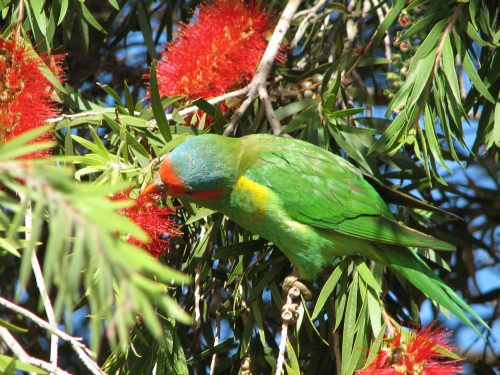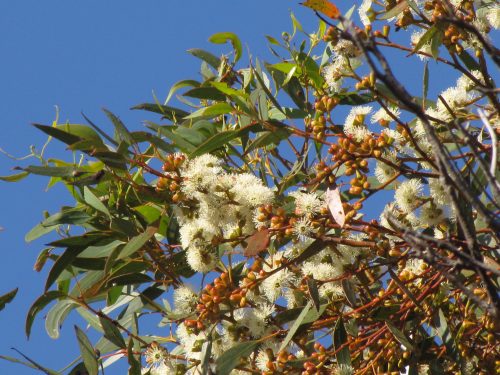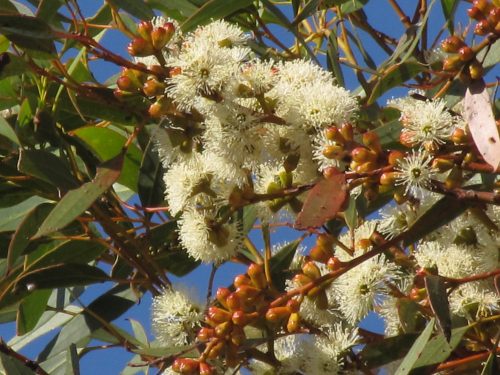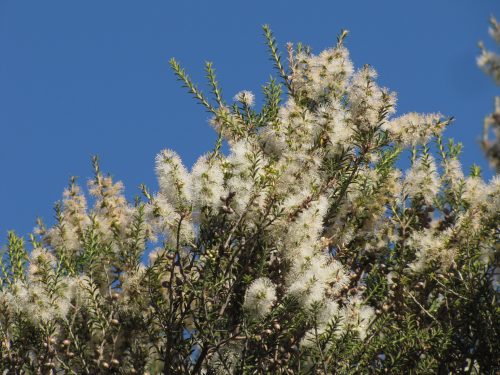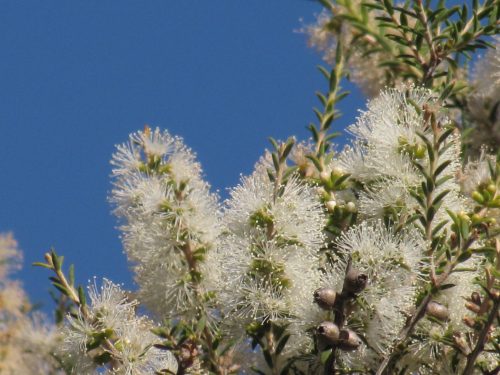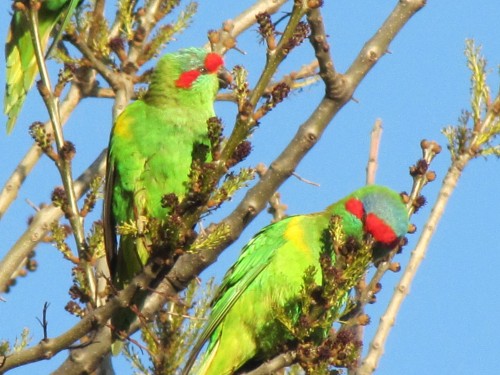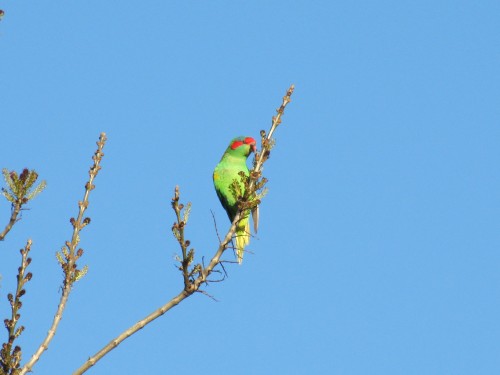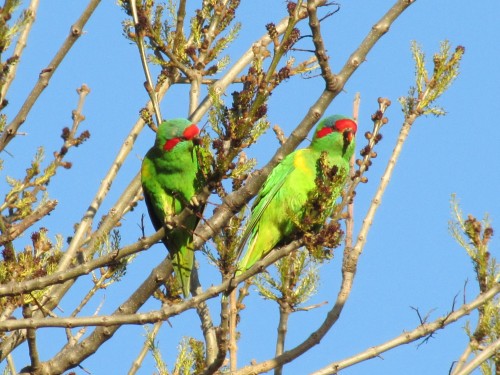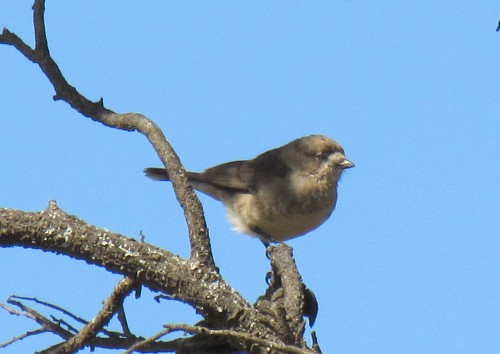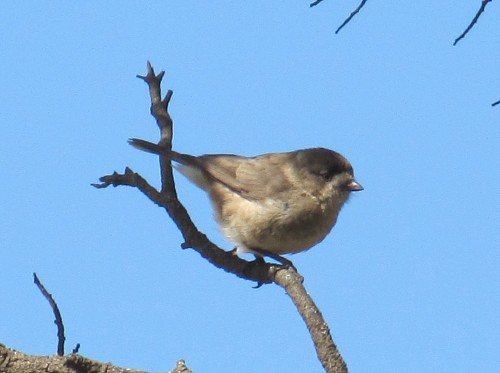Lots and lots of Lorikeets
An influx of Lorikeets
Over recent days we have had an influx of lorikeets in our garden, on our property and along the road leading to our place here on the edge of Murray Bridge in South Australia.
Normally, we have the odd flyover of a small group of Purple-crowned Lorikeets. Occasionally they will land in one of our mallee trees for a short feed, depending on the extent of flowering at the time. They rarely stay for more than a few minutes.
From time to time we also have Rainbow Lorikeets shooting across the tops of the trees at speed. They are often gone in a flash, flying like colourful arrows against a blue sky. They, too, rarely come to settle in our trees.
The current influx of Musk Lorikeets is somewhat unusual. It is the first time in over 12 years that I have recorded it here in our garden. (My database records only go back that far; I am progressively working back through them.) Although it is relatively common in this area, I haven’t recorded it in our garden in all those years. In fact, if my memory is correct, I have recorded this species in our garden on only a handful of previous occasions, all of them more than 12 years ago.
Why the influx of Musk Lorikeets?
This leads me to contemplate the question: “Why now?”
The reasons are clear and far from complex. The last six to eight months have been exceptional from a weather point of view. From late mid-winter last July (2016) we have had well above average rainfall. This extra rain has produced one of the best flowering seasons for many years over the recent summer months (December – February). The eucalyptus mallee trees have flowered prolifically, along with many other local species of shrubs and bushes. Being predominantly nectar eating birds, Musk Lorikeets have flocked to this area. I don’t mind; I love having them around.
While I was watching them feeding in a mallee tree near to our house earlier this week, something spooked them. They flew off over our orchard, wheeled around to the north, then east and like green coloured screeching darts came hurtling back to the tree near me and recommenced feeding. As they flew, I estimated that there were some 40 to 50 birds, far more than one usually sees in a flock here. Having said that, I have seen large flocks flying together while visiting my daughter in Clare in the mid-north of South Australia.
More photos
I have included below, several photos of some of the trees and bushes currently flowering in our garden. These are what the lorikeets have been feeding on.
Further reading:
- Mallee trees
- Purple-crowned Lorikeets
- Purple-crowned Lorikeets at Brown’s Road Monarto
- Rainbow Lorikeets
- Feeding time at the Zoo
- Close views of Musk Lorikeets
Pesky Musk Lorikeets
Last Sunday I was in my daughter’s back yard in Clare sitting in lovely winter sunshine. I was intent on the novel I was reading and trying hard not to doze off in the warmth of the sun on my back. A small flock of about a half dozen Musk Lorikeets noisily flew into the neighbour’s almond tree.
I firstly checked them out with the binoculars; I’ve also seen Purple-crowned Lorikeets in this locality. I then grabbed my camera and quietly walked to the fence. Zooming in I could see that they were not going to be easily spooked. The unopened flower buds on the almond tree were obviously good eating. In the next two minutes I managed to get 18 really good photos, some of which I share on this site today.
Musk, Purple-crowned and Rainbow Lorikeets are relatively common and widespread throughout the Mt Lofty Ranges and the mid-north of South Australia, and elsewhere such as the south-east of the state. They can be seen in some places in large numbers, noisily feeding in eucalypt trees in particular.
When they are feeding in the dense canopy of a gum tree (eucalypt) they can be very hard to see, let alone photograph. So seeing them feeding in a tree with little foliage made photography so much easier for me. I wish all birds were so accommodating.
Further reading:
- Purple-crowned Lorikeets at Brown’s Road Monarto
- Purple-crowned Lorikeets
- Rainbow Lorikeets feeding
- Lorikeets and flowering trees
Southern Whiteface, Peterborough, South Australia
Over the Easter weekend earlier this year we were staying with our daughter in Clare in the mid-north of South Australia. While there we took a day trip to Peterborough just over an hour north of Clare. This was to visit family living there.
On the northern outskirts of the town we visited the ruins of the first house my wife lived in when she was a little girl. Near to ruins I wandered through some of the nearby scrub, an area I did extensive birding in many years ago. I was delighted to get close-up views of several Southern Whitefaces (shown in the photos today).
Southern Whitefaces are widespread in the more arid regions of the southern half of Australia. They are widespread and can be locally common in some areas of suitable habitat.
Black-tailed Native-hens at Clare
A few days ago I was asked by a local courier company to deliver several urgent parcels to Clare in the mid-north of South Australia. I do the occasional emergency run for this company and enjoy getting paid to go for lovely drives in the country. The wine growing region of the Clare Valley is just over 2 hours drive from my home.
After delivering the parcels I wandered over the road to the well patronised local bakery to get some lunch. I then drove to the lake on the north eastern edge of town next to the Clare Country Club. This lake is a five minute walk from my daughter’s home and about the same from where we used to live many years ago. I couldn’t visit my daughter; she’s currently teaching in Ethiopia.
While I ate my delicious Cornish pasty I did a spot of birding, including some photography. The rest of day was mine so I could take as long as I wished getting home again. The first species to show was a large flock of abut 60 Black-tailed Native Hens, shown in the photos above and below. I haven’t seen that many together in one spot for quite a while.
Ian Roberts, Bird Artist
We stayed with our daughter in Clare in the mid-north of South Australia recently. While we were there we went to the nearby small town of Blyth, about twenty minutes drive to the west. We especially went to visit the Medika Gallery run by Ian Roberts. We have known Ian for some years through the Australian Plants Society. Ian has regularly grown plants for sale at our sales in Adelaide. He also exhibits his paintings at the plant sales.
Bird Paintings
Although we often visit Clare and have driven through Blyth many times we had never visited the Medika Gallery. Ian has converted an old church in the middle of the town into a wonderfully welcoming gallery displaying both his paintings and the works of several other local artists. Ian specialises in painting Australian birds. He has a wonderful gift of being able to capture not only the beauty but also the unique characteristics of our birds. He is also able to beautifully portray the birds in natural settings, highlighting many of our native Australian plants where the birds feed, roost or nest.
To view some of Ian’s beautiful paintings click here. You can also order his works through his site.
This post was updated on 23rd February 2017.
